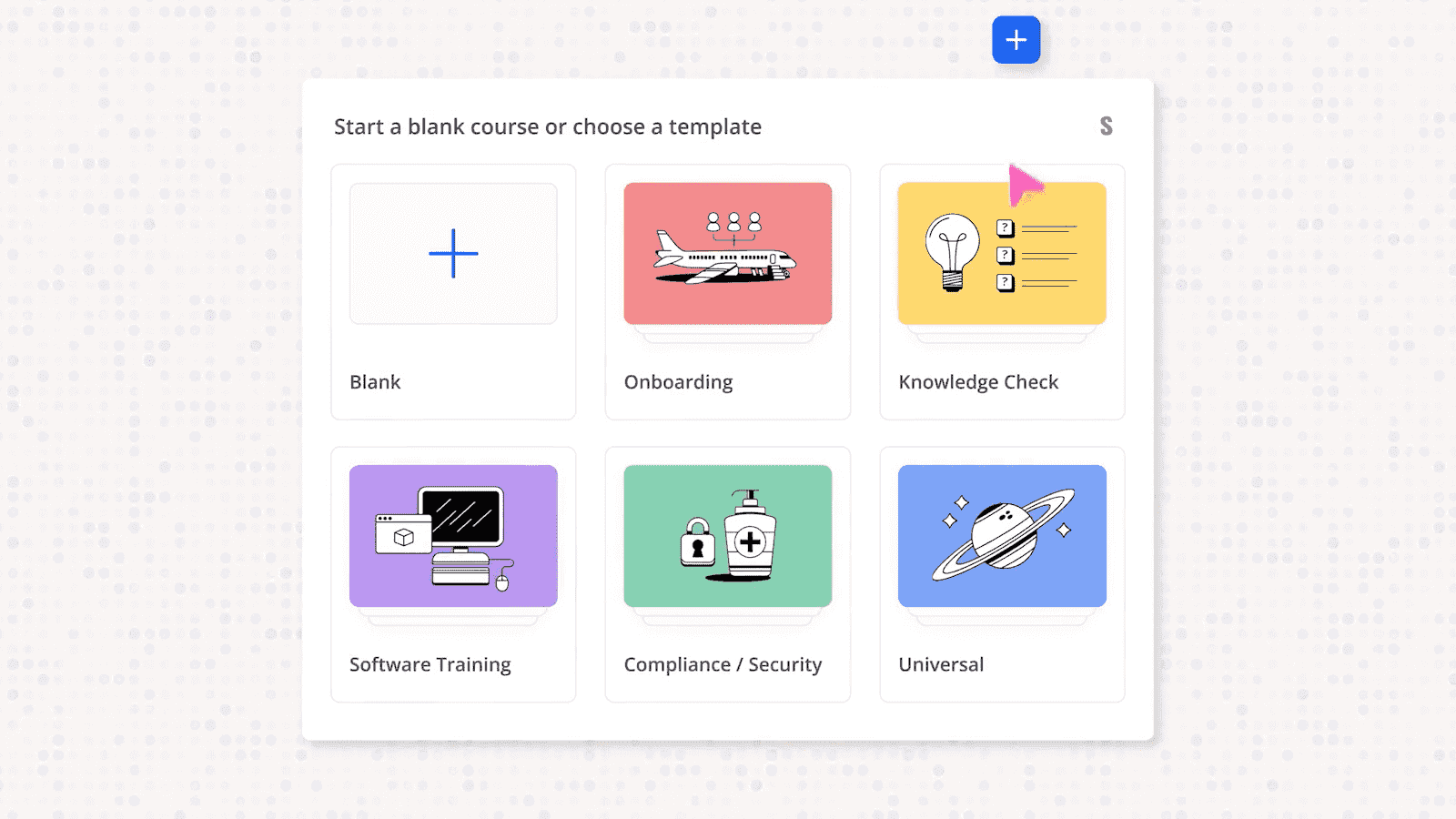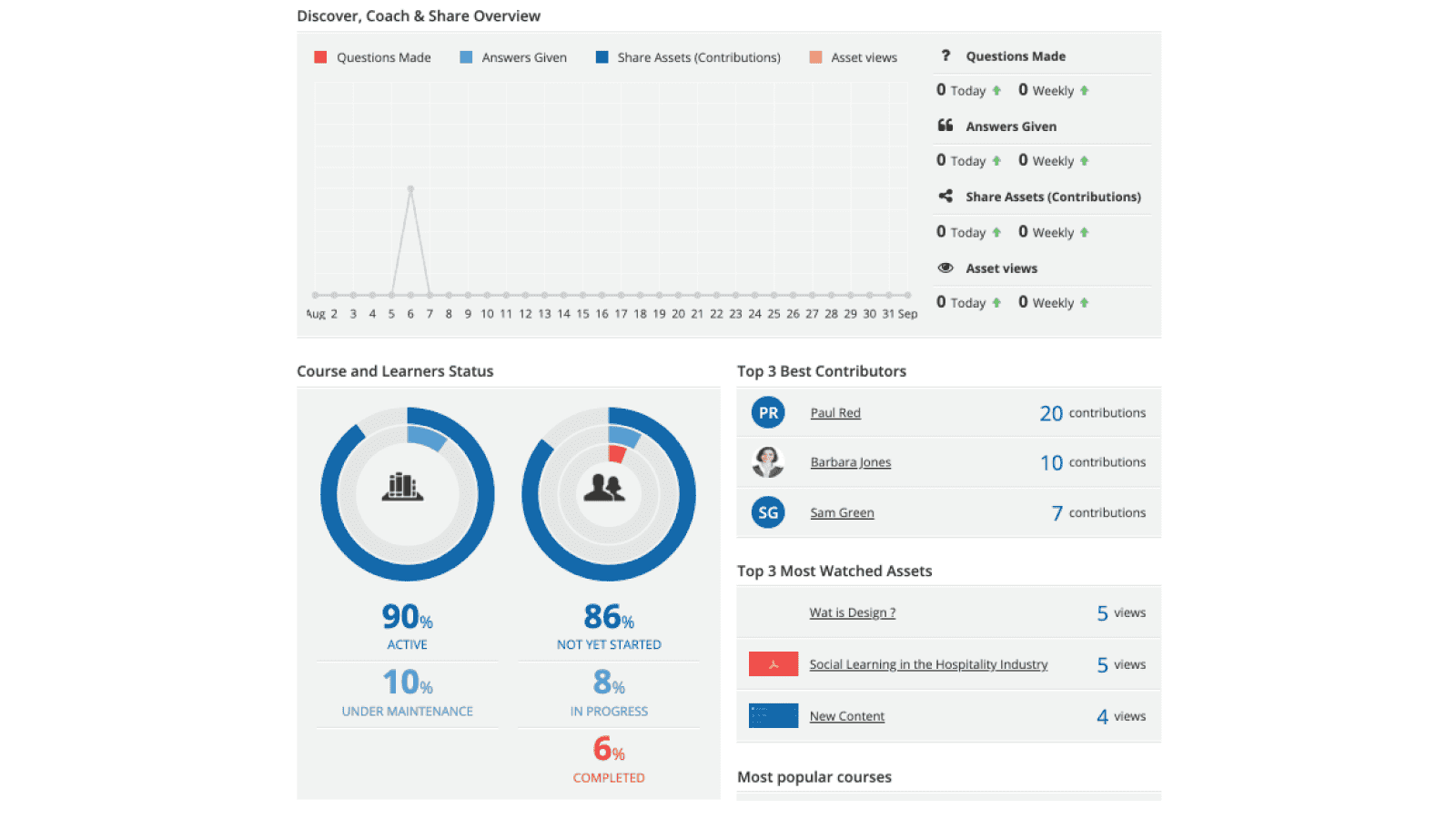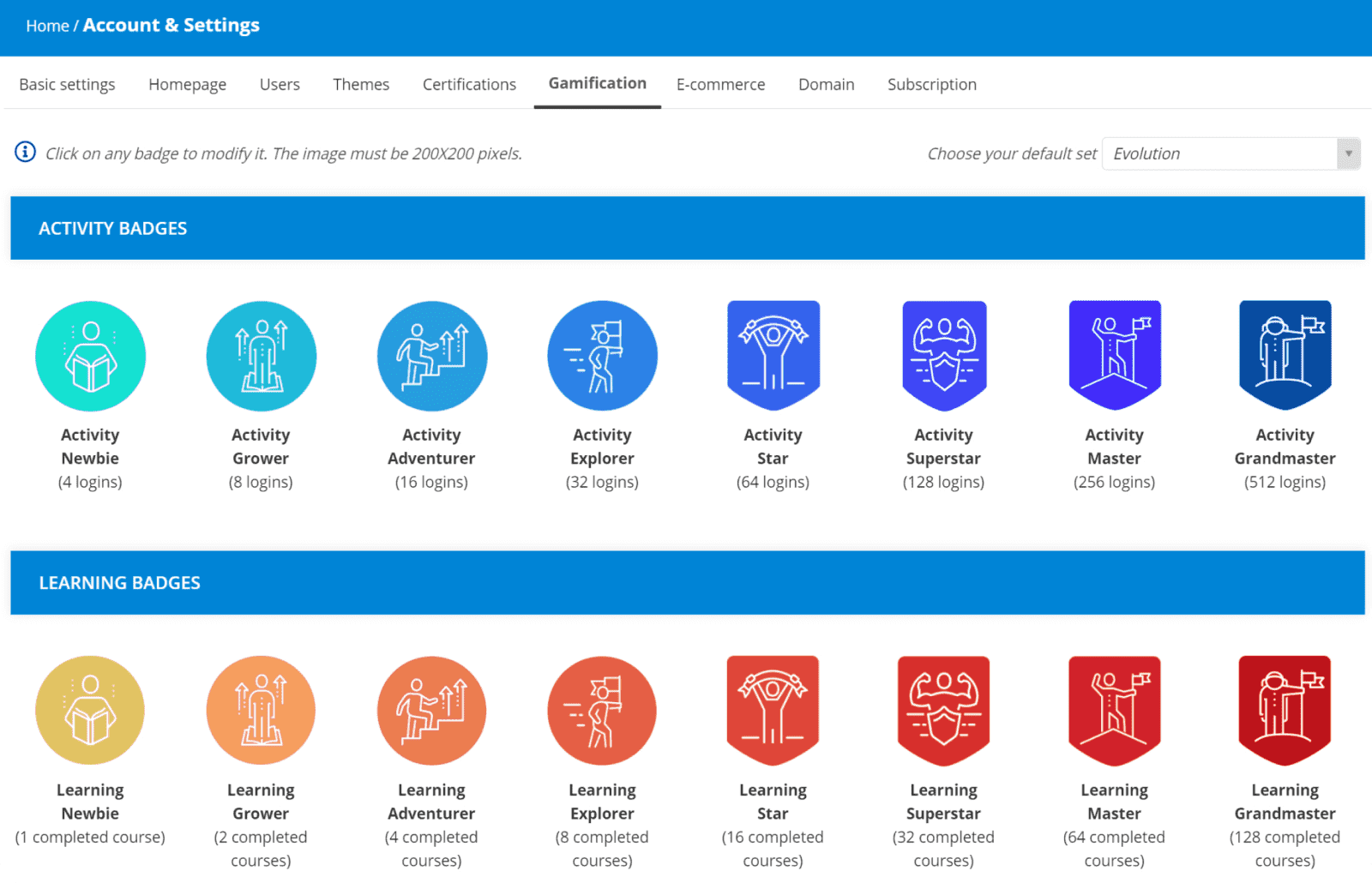
Top 26 LMS features, real-life examples & selection factors
February 20, 2024
A vast array of Learning management system (LMS) features facilitate the design, administration, and delivery of educational content and services. Explore the best LMS software capabilities by functional area, along with key factors our LMS consultants recommend you consider when selecting a feature set for your solution.
Table of contents
Key LMS features
1 Content authoring
2 Course management
3 Multi-format content support
4 Learning object repository
5 Course catalog
eLearning services administration
6 Admin panel
7 Online scheduling
8 User account management
9 Notification system
10 Learner assessment
11 Certification
Value-adding learning experience features
Gamification
13 Social learning
14 Mobile learning
15 Virtual classrooms
16 AI-based personalization
17 Support for AR & VR
An LMS equipped with AR/VR functionality can enable the creation of immersive training resources and activities that engage learners with 3D simulations or superimposed digital information.
18 Feedback system
19 Multilingual interface
Technical capabilities
20 System access
21 Security
22 Ecommerce module
23 Help desk
24 White labeling
25 Analytics & reporting
26 eLearning standard compliance
Deliver superior learning experiences with Itransition’s LMS solutions
Real-life examples of LMS features
360Learning’s content authoring tool

Image title: 360Learning’s templates for content authoring
Image source: 360learning.com — Authoring Tool: Create Impactful Courses in Minutes With Collaborative Learning
Docebo’s administration panel

Image title: Docebo’s admin dashboard
Image source: help.docebo.com — Managing the Admin dashboard
TalentLMS’ gamification features

Image title: TalentLMS’ badges for gamified activities
Image source: help.talentlms.com — A guide to the TalentLMS gamification features
Absorb LMS’ ecommerce module
Factors to consider for LMS feature set selection
LMS types by learning scenario
You should select a certain number of features to design your system fully aligned with your business needs and within reasonable development and adoption costs. This choice largely depends on your learning context, type of users, and didactic approach.
Enterprise LMS for corporate training
Enterprise LMS for corporate training
Features to focus on include multitenancy and role-based access to provide trainers, staff members, customers, and partners with different tools and resources. Companies should also integrate their LMS with an HR software system to deliver personalized employee training based on roles and departments.
LMS for eLearning & online education
LMS for traditional education
Custom vs platform-based LMS
Based on your functional requirements and budget considerations, you can build a custom LMS from the ground up or create a solution on top of open-source and off-the-shelf LMS platforms, including cloud-based SaaS products.
Platform-based LMS
Integrations to expand LMS functionality
Beyond embedded features, you can extend the functional scope of your LMS system by integrating it with external software solutions.
Our LMS services
Itransition can help you develop an LMS equipped with a rich set of features and facilitate its adoption or revamp your existing solution to better align it with your evolving educational needs.
LMS consulting
We can guide you through each phase of your LMS development and implementation project, assisting you with business analysis, tech stack and feature selection, planning, and budgeting.
LMS development
Our team delivers custom learning management systems covering design, front-end and back-end development, integration with other applications, and end-to-end testing.
LMS maintenance & support
Itransition provides post-release maintenance services to monitor the LMS solution and fix bugs or performance issues that may hinder its correct operation, together with user training and technical assistance to streamline software adoption.
LMS modernization
Our developers can enhance the performance, usability, and maintainability of your legacy LMS via architecture renovation, code refactoring, functional upgrades, UI/UX redesign, and app migration to a cloud or hybrid environment.
Adopt an LMS with Itransition’s guidance
Choose the right features for your LMS
LMSs aim to facilitate complex educational workflows, from course design and lesson planning to student enrollment. However, equipping them with a wide range of potential feature combinations might be disorienting to students and instructors alike. Defining your operational scenario can help you choose the right LMS feature set and implement a solution that will support your educational offer. To streamline this process, consider relying on Itransition’s experience in LMS development and consulting.

Case study
LMS solution with ERP features for an eLearning company
Learn how Itransition created an Odoo-based LMS solution to let the client deliver parenting education online.

Service
eLearning software development services
Explore Itransition’s eLearning software development services, along with key application types, features, integrations, technologies, and guidelines.

Case study
Corporate learning portal for PayPal
This is how Itransition delivered a platform-based new hire training portal for PayPal, helping to reduce the learning curve for newcomers.